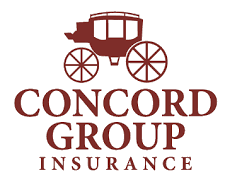The Best Home Insurance in Vermont for 2024
Many or all of the products featured here are from our partners who compensate us. This influences which products we write about and where and how the product appears on a page. However, this does not influence our evaluations. Our opinions are our own. Here is a list of our partners and here's how we make money.
The average cost of homeowners insurance in Vermont is $870 per year, or about $73 per month, according to a NerdWallet analysis. For comparison, the national average is $1,915 per year.
NerdWallet analyzed data from numerous insurance companies to help you find the best home insurance in Vermont in the following categories:
Best for affordability: Concord Group.
Best for coverage: State Farm.
Best for consumer experience: Nationwide.
The rates in our analysis are estimates based on many factors, so your rate may differ.
Note: Some insurance companies included in this article may have made changes in their underwriting practices and no longer issue new policies in your state. Even if an insurer serves your state, it may not write policies for all homes in all areas.

Best affordable homeowners insurance in Vermont: Concord Group

Concord Group
Coverage options
Discounts
NAIC complaints
Concord Group
Coverage options
Discounts
NAIC complaints
In Vermont, the average annual premium for Concord Group is $625, which is well below the state average of $870.
The Concord Group sells homeowners insurance through independent agents in select New England states. If you want more than the default options, you can add things like identity theft coverage or insurance for sewer backups.
One unique option is guaranteed replacement coverage for the structure of your home, which will pay what it takes to rebuild your home after a covered disaster, even if your dwelling coverage limit isn’t high enough. Add the “green endorsement” for up to $20,000 toward using eco-friendly materials during rebuilding.
Learn more with our Concord Group homeowners insurance review.
Best homeowners insurance in Vermont for coverage: State Farm
Coverage options
Discounts
NAIC complaints
State Farm
Coverage options
Discounts
NAIC complaints
As America’s largest insurer, State Farm stands out for its long list of coverage options. Its policies generally include extra dwelling coverage in case it costs more than expected to rebuild your home after a covered disaster. You may also be able to add coverage for things like identity theft, damage from backed-up drains and personal injury liability.
State Farm offers a free Ting device as a perk for home insurance policyholders. Ting is a smart plug that monitors your home’s electrical network to help prevent fires.
Learn more with our State Farm homeowners insurance review.
Best homeowners insurance in Vermont for consumer experience: Nationwide

Nationwide
Coverage options
Discounts
NAIC complaints
Nationwide
Coverage options
Discounts
NAIC complaints
Nationwide offers a robust digital experience for its customers, including a website that makes it easy to manage policies, file and track claims, and set up automatic billing. It also has a highly rated app for Android and iOS that allows customers to file and track claims, review policy documents, and set up autopay.
In addition, Nationwide’s customers have several ways to get assistance, such as reaching out to their agent or calling the company’s customer service hotline. Outside of business hours, they can use the Nationwide website to get proof of insurance, pay bills and schedule callbacks. A chatbot is also available to answer basic questions.
Learn more with our Nationwide homeowners insurance review.
Full list of the best homeowners insurance in Vermont
NerdWallet analyzed home insurance companies across the state to find the best home insurance in Vermont. Here are all of the insurers that received a NerdWallet star rating of 4.5 or higher:
Company | NerdWallet star rating | Average annual rate |
|---|---|---|
Not available | ||
Not available | ||
Not available | ||
$625 | ||
Not available | ||
Not available | ||
$1,110 | ||
$1,710 | ||
USAA* | $870 | |
*USAA homeowners policies are available only to active military, veterans and their families. | ||
How much does homeowners insurance cost in Vermont?
The average annual cost of home insurance in Vermont is $870. That’s 55% less than the national average of $1,915.
In most U.S. states, including Vermont, many insurers use your credit-based insurance score to help set rates. Your insurance score is similar but not identical to your traditional credit score.
In Vermont, those with poor credit pay an average of $1,530 per year for homeowners insurance, according to NerdWallet’s rate analysis. That’s 76% more than those with good credit.
Average cost of homeowners insurance in Vermont by city
How much you pay for homeowners insurance in Vermont depends on where you live. For instance, the average cost of home insurance in Burlington is $835 per year, while homeowners in Montpelier pay $885 per year, on average.
City | Average annual rate | Average monthly rate |
|---|---|---|
Barre | $840 | $70 |
Bennington | $945 | $79 |
Brandon | $845 | $70 |
Brattleboro | $890 | $74 |
Bristol | $830 | $69 |
Burlington | $835 | $70 |
Colchester | $835 | $70 |
Essex Junction | $965 | $80 |
Lyndonville | $860 | $72 |
Middlebury | $830 | $69 |
Milton | $850 | $71 |
Montpelier | $885 | $74 |
Morrisville | $870 | $73 |
Newport | $850 | $71 |
Northfield | $860 | $72 |
Rutland | $930 | $78 |
St. Albans | $950 | $79 |
St. Johnsbury | $845 | $70 |
Shelburne | $895 | $75 |
South Burlington | $865 | $72 |
Springfield | $895 | $75 |
Swanton | $950 | $79 |
White River Junction | $860 | $72 |
Williston | $870 | $73 |
Winooski | $835 | $70 |
The cheapest home insurance in Vermont
Here are the insurers we found with average annual rates below the Vermont average of $870.
Company | NerdWallet star rating | Average annual rate |
|---|---|---|
Vermont Mutual | $525 | |
$625 | ||
Patriot Insurance | Not rated | $815 |
What to know about Vermont homeowners insurance
You may face certain risks when living in Vermont. Here are a few of the most common, along with steps you can take to insure your home properly against them.
Winter weather
Homeowners insurance generally covers winter storm-related damages, but some types of winter weather damage may require extra coverage. For instance, you’ll typically need a separate flood insurance policy to cover flood damage caused by snowmelt.
Flooding
Standard homeowners insurance does not cover flood damage, so homeowners in flood-prone areas may need to purchase separate flood insurance.
To find out your risk, check out the Federal Emergency Management Agency's flood maps and RiskFactor.com, a website from the nonprofit First Street Foundation. Even if your property is deemed low risk, it may be worthwhile to purchase flood insurance for extra peace of mind.
Remember that while you can purchase flood coverage at any time, there’s typically a 30-day waiting period before the insurance takes effect. Here’s more information about flood insurance and waiting periods.
Wind and hail damage
Damage from wind and hail is typically covered under standard homeowners insurance policies. However, your policy may have a separate wind/hail deductible, typically from 1% to 5%. If your house has $250,000 worth of dwelling coverage and a 1% deductible for wind claims, you’d have to pay for the first $2,500 of wind damage yourself.
Landslides
Vermont’s hilly terrain and heavy rainfall can lead to landslides, which pose a risk for homeowners. Landslides are not covered under standard homeowners insurance, so you’ll likely need to buy an optional add-on for your policy in order to be covered.
Wildfires
Standard homeowners insurance typically covers damage caused by fire, but residents of high-risk areas should read their policies closely to ensure they understand any exclusions. Pay particular attention to the dwelling coverage limit, which is how much the insurance company will pay to rebuild your house. Check with your insurer to ensure you have enough coverage to rebuild if necessary.

Vermont insurance department
The Insurance Division of the Vermont Department of Financial Regulation oversees the state’s insurance industry. It is responsible for licensing insurers and regulating insurance products to help protect consumers.
In addition to providing consumer information, the division helps consumers who need to file complaints about their insurers online, by mail or fax. If you have questions about filing an insurance complaint, contact the division at 800-964-1784 or [email protected].
Amanda Shapland contributed to this story.
NerdWallet calculated median rates for 40-year-old homeowners from various insurance companies in every ZIP code across the state. All rates are rounded to the nearest $5.
Sample homeowners were nonsmokers with good credit living in a single-family, two-story home built in 1984. They had a $1,000 deductible and the following coverage limits:
$300,000 in dwelling coverage.
$30,000 in other structures coverage.
$150,000 in personal property coverage.
$60,000 in loss of use coverage.
$300,000 in liability coverage.
$1,000 in medical payments coverage.
We made minor changes to the sample policy in cases where rates for the above coverage limits or deductibles weren’t available.
We changed the credit tier from “good” to “poor,” as reported to the insurer, to see rates for homeowners with poor credit.
These are sample rates generated through Quadrant Information Services. Your own rates will be different.
Star rating methodology
NerdWallet’s homeowners insurance ratings reward companies for customer-first features and practices. Ratings are based on weighted averages of scores in several categories, including financial strength, consumer complaints, coverages, discounts and online experience. These ratings are a guide, but we encourage you to shop around and compare several insurance quotes to find the best rate for you. NerdWallet does not receive compensation for any reviews. Read our full homeowners insurance rating methodology.
Complaint methodology
NerdWallet examined complaints received by state insurance regulators and reported to the National Association of Insurance Commissioners in 2020-2022. To assess how insurers compare with one another, the NAIC calculates a complaint index each year for each subsidiary, measuring its share of total complaints relative to its size, or share of total premiums in the industry. To evaluate a company’s complaint history, NerdWallet calculated a similar index for each insurer, weighted by market shares of each subsidiary, over the three-year period. NerdWallet conducts its data analysis and reaches conclusions independently and without the endorsement of the NAIC. Ratios are determined separately for auto, home (including renters and condo) and life insurance.
On a similar note...



